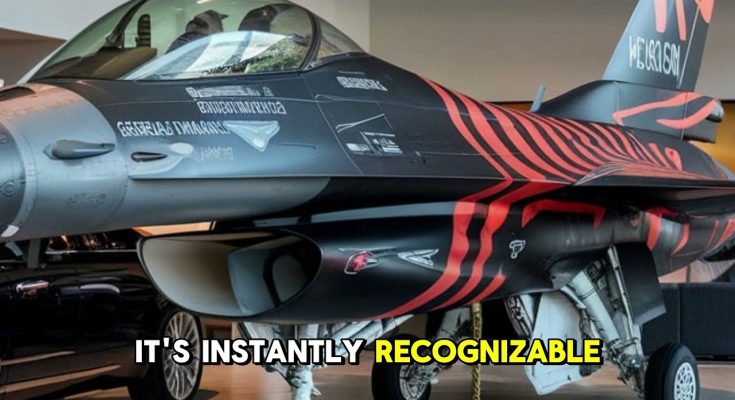The F-16 Fighting Falcon has long been one of the most successful and versatile fighter jets in the world, serving in the air forces of over 25 countries since its introduction in 1978. Known for its agility, speed, and adaptability, the F-16 has earned a reputation as a reliable multirole fighter. However, with the evolution of aerial combat and the advancement of military technologies, the F-16 is undergoing a significant transformation. Enter the 6th generation F-16—a reimagined version of the classic fighter jet that promises to redefine the future of air combat.
The Birth of the 6th Generation F-16
Lockheed Martin, the company behind the original F-16, has introduced a new concept that incorporates cutting-edge technologies to bring the iconic fighter jet into the 6th generation. The 6th generation F-16 is not just a simple upgrade but a complete reimagination of the airframe, avionics, and weapon systems. It incorporates elements of AI-driven decision-making, advanced stealth capabilities, and next-gen avionics to keep it relevant in modern warfare, where the pace of technological advancement is accelerating.
Key Features of the 6th Generation F-16
- Advanced Stealth and Low Observability One of the most significant upgrades in the 6th generation F-16 is its enhanced stealth features. While the original F-16 was designed with some radar-absorbing features, the new version will feature improved stealth capabilities that reduce its radar cross-section, making it much harder to detect by enemy radar systems. This includes the use of next-generation materials and shaping technologies to minimize its visibility, allowing it to operate more effectively in contested airspaces without being easily tracked or targeted.
- Autonomous Capabilities and AI Integration The integration of artificial intelligence (AI) will be a game-changer for the 6th generation F-16. With AI onboard, the aircraft will be capable of autonomous flight and can assist human pilots in making complex decisions during combat. AI systems will optimize mission planning, identify targets, and execute evasive maneuvers that would otherwise be too fast for a human pilot to perform. In addition, AI can process vast amounts of data in real-time, enabling the aircraft to make lightning-fast decisions on the battlefield, such as detecting and neutralizing threats before a human pilot could react.
- Enhanced Cockpit and Pilot Interface The cockpit of the 6th generation F-16 will feature next-gen avionics and an augmented reality (AR) helmet-mounted display. These systems will allow pilots to access critical mission data with enhanced clarity, without having to take their eyes off the skies. The AR display will project real-time information about threats, targets, and tactical decisions directly into the pilot’s field of view, improving situational awareness and reducing cognitive load. This type of integration will enable pilots to focus more on decision-making rather than controlling the aircraft.
- Next-Generation Weaponry The 6th generation F-16 will be compatible with a new range of advanced weapon systems designed to enhance its lethality and versatility. This includes precision-guided munitions, hypersonic missiles, and next-generation direct energy weapons. Additionally, the F-16 will integrate multi-domain capabilities, allowing it to work in tandem with unmanned systems or operate in networked battle spaces where it can share data and coordinate strikes with other platforms in real time.
- Increased Range and Endurance With the integration of next-gen propulsion systems, the 6th generation F-16 is expected to have greater fuel efficiency and longer operational range. This will allow the jet to carry out missions over extended distances without the need for frequent refueling. The aircraft’s extended range is crucial for modern warfare, where missions often require jets to fly into enemy territory or conduct long-duration surveillance without compromising their effectiveness.
- Enhanced Survivability and Countermeasures The 6th generation F-16 will also feature upgraded electronic warfare (EW) systems, allowing it to jam enemy radar, disrupt communications, and confuse tracking systems. These countermeasures, combined with the enhanced stealth features, make the F-16 far more difficult to target and engage by adversaries. The ability to operate in high-threat environments with increased survivability is a key advantage for modern fighter jets.
The Future of Combat Aviation
The unveiling of the 6th generation F-16 represents a major step forward for both the aircraft itself and the evolution of military aviation. As countries continue to face sophisticated and rapidly evolving threats, it is essential for air forces to adapt by incorporating cutting-edge technologies that keep them ahead of potential adversaries. The new F-16 brings a reliable, cost-effective solution to the table, offering both advanced capabilities and the flexibility to meet the challenges of modern combat.
With AI integration, stealth improvements, and a host of new systems, the 6th generation F-16 is poised to redefine the balance of power in the skies. While it maintains the classic agility and maneuverability that made the F-16 famous, the aircraft will be transformed into a truly next-gen platform capable of dominating the battlefield in the era of advanced aerial combat.
Conclusion
The 6th generation F-16 is not just a mere upgrade but a rebirth of the iconic fighter jet, bringing it into the future of warfare. With enhanced stealth, AI-driven automation, next-gen weaponry, and unparalleled survivability, this new version of the F-16 promises to be a formidable asset for any air force. As military technology continues to evolve, aircraft like the 6th generation F-16 will play a pivotal role in shaping the future of aerial warfare.



